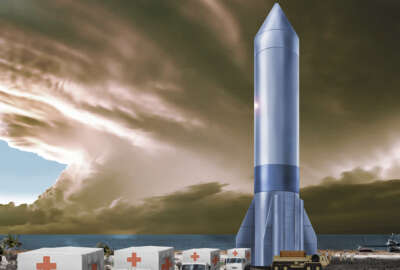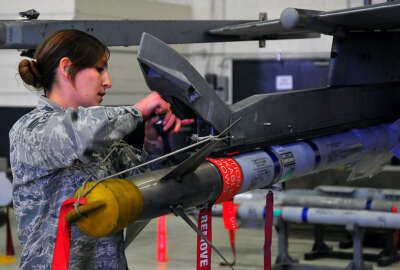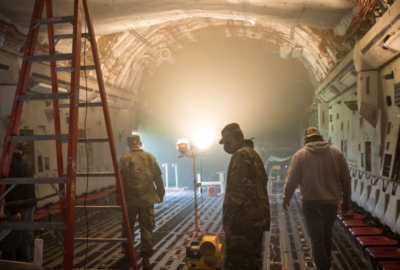Air Force AI-driven drone program makes step into the future
The contracts will develop the integration of the autonomous core system and continued operational experimentation through 2022.
The Air Force is moving one of its high-profile, experimental initiatives closer to becoming a program of record; further solidifying the service’s push to create new, advanced capabilities to counter near-peer competitors.
The Air Force Life Cycle Management Center announced Monday that it awarded up to $13.2 million in contract options to KRATOS and up to $7 million to General Atomics for the further development of its Skyborg Vanguard program.
Skyborg is a prototype of networked drones that fly with fighter pilots and detect potential air and ground threats. The drones use sensors to analyze imminent danger, identify striking options and make decisions based on established rules of engagement through the use of artificial intelligence.
The contracts will develop the integration of the autonomous core system and continued operational experimentation through 2022.
“The vehicles will demonstrate future warfighting capabilities through the teaming of manned and unmanned platforms at large force test events,” according to an Air Force release. “The test events will provide critical information and the necessary insight needed to shape a future program.”
Brig. Gen. Dale White, program executive officer for fighters and advanced aircraft said, “These contract actions, while tactical in nature, are strategically important to this vanguard as we continue to discover and learn how we will employ this advance technology in the fight. The team has always been committed to transitioning Skyborg to a program of record, and we’ll be ready in 2023 as the Air Force prepares its 2023 president’s budget submission early next year.”
The next Skyborg operation exercise is slated for fall of 2021.
The Air Force announced its vanguard initiatives in November 2019. Along with Skyborg, the Air Force started Golden Horde and Navigation Technology Satellite-3.
“Each program is evaluated on its merits individually,” Air Force Materiel Command leader Gen. Arnold Bunch said when the programs were announced. “We are not looking for just an incremental increase. The way we see these is if we get these to work and function the way we expect, then it will be a leap ahead.”
Golden Horde gives missiles a swarming capability and allows them to work together and figure out the best way to attack a target even after they have been deployed. The Air Force would install software into existing missiles to produce the effect.
“Navigation Technology Satellite-3 will be in geosynchronous orbit and it will be working on position, navigation and timing (PNT) changes, and doing it in a different way,” Bunch said.
A fact sheet from the Air Force Research Laboratory explains the possible new concepts and technologies that might come from the satellite.
“Experimental antennas, flexible and secure signals, increased automation, and use of commercial assets. Technologies matured and knowledge gained from NTS-3 are expected to transition to future generations of GPS and potential augmentations to national PNT capabilities,” the fact sheet states.
The service announced a fourth vanguard program in June called Rocket Cargo.
“Rocket cargo is envisioned as a Defense Department interface with commercial capabilities, where we deliver up to 100 tons of cargo anywhere on the planet on tactical timelines,” Maj. Gen. Heather Pringle, Air Force Research Laboratory commander said. “This newest vanguard has the support of the entire Department of the Air Force, and if successful, will be partnered with the right team to transition this to warfighters.”
That program will be heavily reliant on commercial partners, since space companies are already highly interested in reentry rockets.
The Air Force announced its vanguard program as part of its science and technology plan for 2030.
“Vanguard programs will be limited in time and scope to achieve focus and urgency. While emphasizing advanced technology, they can synergize applied research, selected basic research, and experimentation and prototyping to drive forward innovative capabilities,” the strategy states.
Those technologies are not clearly defined, however. Instead they are concepts the Air Force wants to get its arms around. They include global persistent awareness; continuous and timely knowledge of adversaries; complexity, unpredictability and mass; overwhelming adversaries through a collaborative and autonomous network of systems; and the ability to rapidly disrupt and neutralize dynamic and mobile targets using new methods to attack with speed and global reach.
Copyright © 2024 Federal News Network. All rights reserved. This website is not intended for users located within the European Economic Area.
Scott Maucione is a defense reporter for Federal News Network and reports on human capital, workforce and the Defense Department at-large.
Follow @smaucioneWFED






